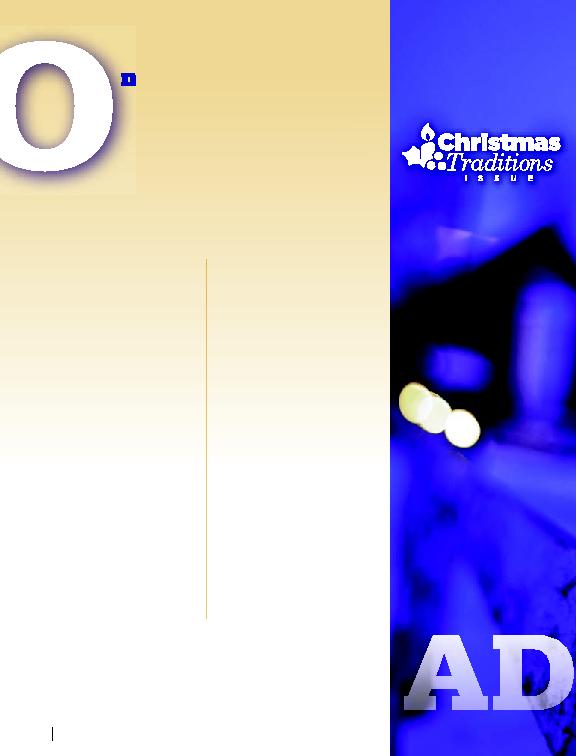
since roughly the 4th century, is
not only a time of expectation and
preparation for the celebration of Je-
sus' birth, but it is a time to spiritu-
ally prepare for His Second Com-
ing. This season of preparation, while
celebrated within many homes and
churches in the United States and
other Western homes, did not com-
mence in the West and was not origi-
nally associated with Christmas.
the Epiphany, which was observed
by churches in France and Spain as
early as the 4th century. The Feast
of Epiphany, which was in existence
long before the institution of Christ-
mas as a segregated observance, was
celebrated on January 6 as a time to
remember the life of Jesus includ-
ing His birth, miracles and baptism.
In the weeks leading up to Epiph-
any, people were expected to fast
and pray in penitence. On Janu-
ary 6, new converts to the Chris-
tian faith were baptized into the
family of believers.
will light the purple candle of hope to com-
refl ecting on the wonderful gift given to them by God. While
Advent precedes Christmas, it is much more than a mere
preparation for the often secular celebration of Christmas.
Spain, established a fast that lasted
from December 17 to January 6.
This three�week fast was later ex-
panded to a 40�day fast from No-
vember 11 until Epiphany on Janu-
ary 6. The Congregants were not
expected to fast on Saturday and
Sundays, so these days were not
calculated into the 40 day fast. In
581, the local council in France ex-
panded the period of fasting from
three weeks to six weeks, running
from November 11, the Feast of
St. Martin, until December 25, the
current celebration of Christmas
for Western Churches (some East-
ern Orthodox Churches celebrate
the birth of Christ on April 6).
Century. In Rome, Advent was seen
not as a time of penitence, but as
a time to joyfully prepare for the
celebration of the birth of
Jesus. Pope
Gregory I (604)
formalized Ad-
w
t
t
tu
t
th
f
f
fo